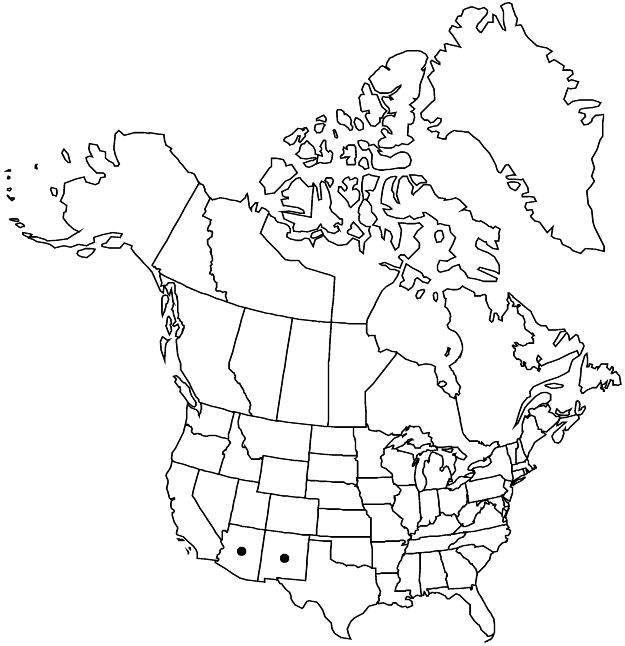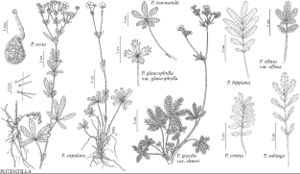Potentilla townsendii
Bull. Torrey Bot. Club 28: 174. 1901.
Glands absent or inconspicuous, uncolored. Stems ascending to nearly erect, (1–)2–5(–7.5) dm. Basal leaves usually not in ranks, palmate, rarely subpalmate, (2–)5–20(–30) cm; petiole (1–)2–15(–25) cm, long hairs usually absent or sparse and appressed, sometimes common and spreading, 1–1.5 mm, stiff, short, crisped, and cottony hairs absent, glands absent; leaflets 5–7(–8), usually on tip, rarely on less than distal 1/10, of leaf axis, separate, largest ones narrowly oblanceolate-elliptic, (1.5–)2–5(–6) × 0.5–1.2(–1.5) cm, margins flat, distal (1/4–)1/2–3/4 evenly incised 1/4–1/3 to midvein, undivided medial blade 4–11 mm wide, teeth (2–)4–8(–9) per side, mostly broadly lanceolate, 1–2 mm, surfaces similar, green, not glaucous, long hairs usually absent or limited to veins and margins, short, crisped, and cottony hairs absent, glands absent. Cauline leaves 1–3. Inflorescences (5–)10–20(–25)-flowered. Pedicels 0.7–3(–3.5) cm. Flowers: epicalyx bractlets lanceolate to elliptic, (2–)2.5–5(–6) × 0.5–1(–1.4) mm, hairs sparse, ± appressed, glands absent; hypanthium 3.5–5 mm diam.; sepals 4–8(–9) mm, apex acute to long acuminate; petals 5–10 × 5–10(–12) mm; filaments 1–3 mm, anthers (0.5–)0.6–1 mm; carpels 15–30, styles filiform above papillate-swollen base, (1–)1.5–2 mm. Achenes 1.1–1.6 mm.
Phenology: Flowering summer.
Habitat: Edges of meadows, dry gravelly flats and slopes, in montane to subalpine conifer woodlands, mixed grassland communities
Elevation: (2300–)2700–3700 m
Distribution

Ariz., N.Mex., Mexico (Chihuahua).
Discussion
Although previously applied only to collections from Chihuahua, Mexico, Potentilla townsendii is here used to accommodate most plants from Arizona and New Mexico previously placed in P. glaucophylla (as P. diversifolia Lehmann). Plants have narrow, shallowly toothed leaflets; stems, petioles, and leaflet veins that are often reddish; and larger anthers than P. glaucophylla. As now circumscribed, P. townsendii is known in the United States primarily from the White Mountains of east-central Arizona and the high mountains of northern New Mexico. Whether these plants are truly conspecific with those from Chihuahua, Mexico, remains to be confirmed. The species might also occur in Colorado and Utah, but the best disposition of these problematic populations is uncertain. Somewhat hairy plants with subpalmate leaves are interpreted as introgression from P. hippiana or other species.
Selected References
None.
